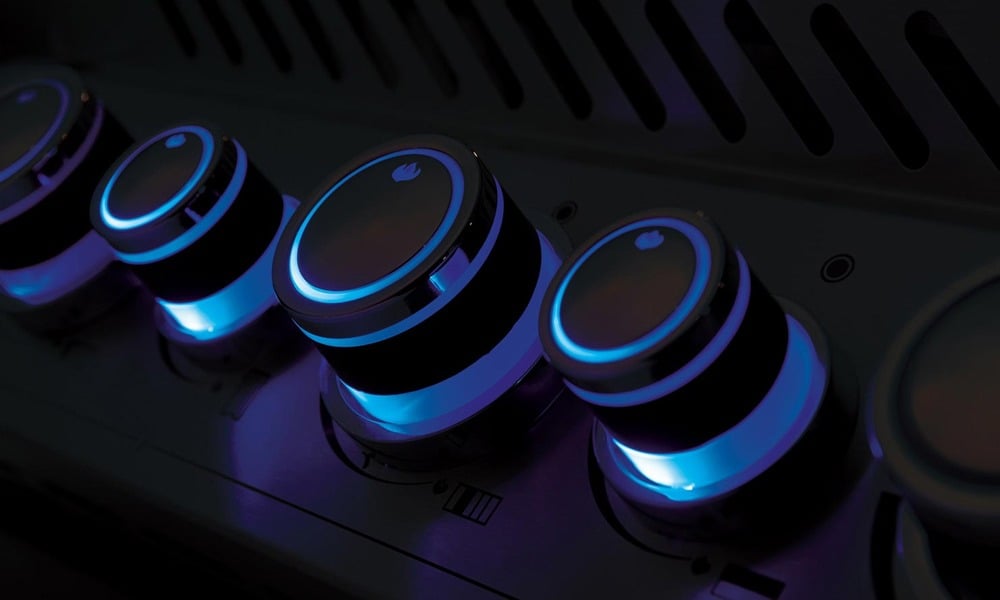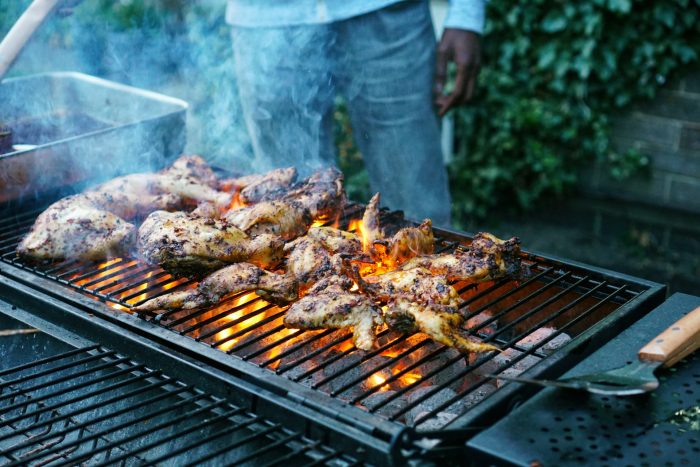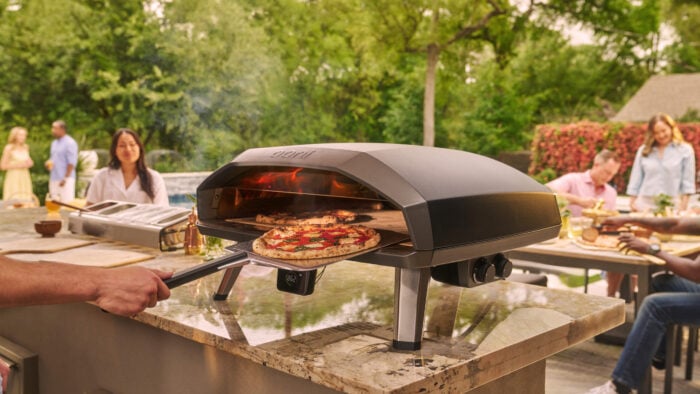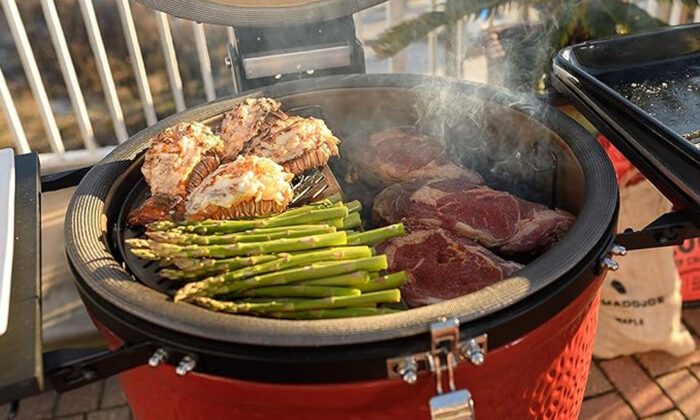Like the old adage says, you get what you pay for. While you can certainly cook a steak on a grill you purchased on the cheap, you may want to consider shelling out the cash for something better. Why? What exactly does your extra money get you? Glad you asked. Here’s the difference between a $100 gas grill and a $1,000 gas grill.
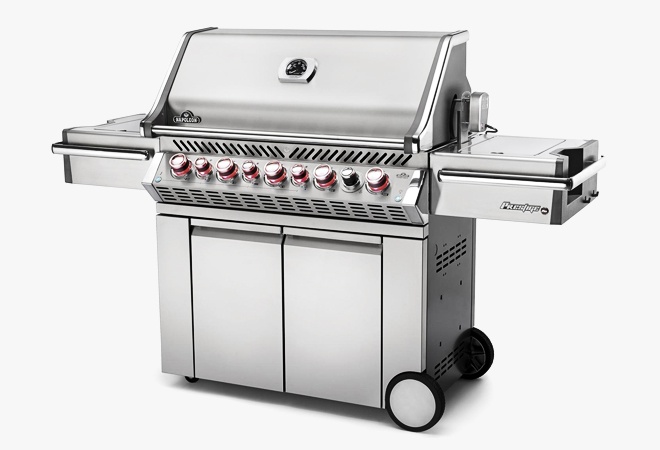
Size
The first difference is so obvious, we almost feel stupid pointing it out. When you spend more money, you can get a bigger grill. Great Scott! Okay, that’s not always the case, obviously, as there are plenty of expensive grills the same size as their affordable counterparts, but if you’re looking for a gas-powered grill with 900 square inches of cooking space, you’re not going to find one for a Benjamin. There are plenty of other factors at play, but if you’re trying to find a large grill for $100, you’re probably maxing out at a few hundred square inches. Drop over a thousand and we’ve seen options in the 1,200-square-inch range.
Burners
A grill’s burner is its most important element. When you’re looking at a cheap grill, chances are the burner will be made of a low grade stainless steel. This means it will rust faster and may only last you a season. One way to check this is by bringing a magnet with you when you are looking. If the magnet is attracted to the stainless steel on the burner (or any other part of the grill) it’s of a lesser grade, meaning it has less chromium and nickel. Many affordable gas grills pack a burner made of 430 stainless. If you go that route, you can expect to replace the burner in due time.
While we’re talking about cheap grills and their burners, we should also mention that most affordable grills have an “H” burner, which is controlled with only one knob. Clearly this means you’ll cook your burgers, dogs, and veggies at roughly the same temperature. With some money, you can do better.
When you’re shelling out four digits, most grills won’t pack a burner that will rust in the blink of an eye. Often made from thicker gauge stainless steel of higher quality, the burner(s) on an expensive model can often last years before needing some TLC. Look for 304 grade to know you’re getting something that will last. An alternative you’ll encounter is cast iron. Cast Iron burners won’t rust… if cared for. Don’t mind the upkeep? Cast iron will stand the test of time. Looking for more of a set it and forget it type deal? Aim for 304 stainless.
Plus, unlike with cheap grills, you can expect to find multiple burners with individual controls when you pony up the cash for something nice. That means you can control the heat in different zones on your grill. Anyone who’s ever grilled more than one type of food at a time can appreciate that.
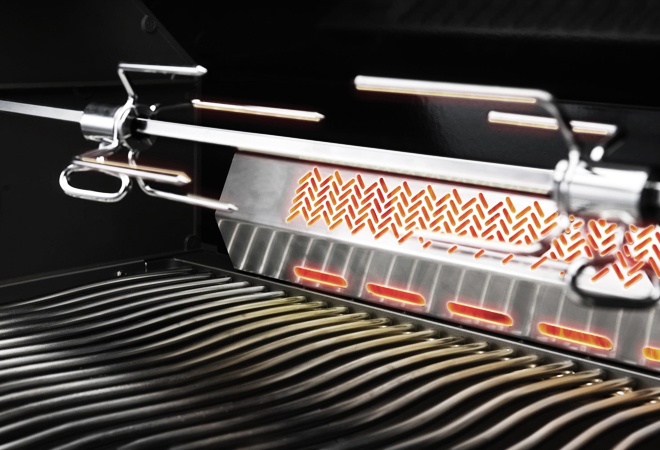
Features
It should come as no surprise that when you drop $100 on a grill, you aren’t getting something decked to the nines. Hell, you’d be lucky to find a gas grill with a thermometer for under $100. (Don’t worry, every built-in grill thermometer is garbage anyway.) Features aren’t the name of the game when you’re buying a cheap grill. Need a grill that won’t hurt your wallet? Pay attention to the cooking area, build quality, and components. Don’t go hunting for dual warming side burners and light up control knobs.
If you really want bells and whistles, you can get bells and whistles. Like expensive cars, fine grills tend to come with upgrades that extend beyond better construction and durability. Obviously each model is different, so you won’t find all of the following features with every $1,000+ grill. That said, the following are some of the niceties you could enjoy if you spend some money:
- Wood chip smoker tray
- Interior lights
- Rotisserie
- Light up control knobs
- Control knobs that change color when the gas is on so you’re always aware
- Prep area with buckets and dishes for marinades, ice, and more
- Side burners
- Refrigerated section (very expensive models)
- Convection fans
- Wi-Fi control
- Sear burners
- Fuel gauge
Heat Output
One of the first things you’ll encounter when you buy a gas grill is the BTU rating, which is a measurement of how much heat the grill can produce. Putting too much weight into this number is a mistake, as there are a lot of caveats along the way, like how efficient the grill is. That said, in general, the higher the BTUs the hotter the grill will get, and many fine models will boast rather large numbers. A good rule of thumb is to aim for around 80–100 BTUs per square inch of cooking space, keeping in mind that many expensive grills are infrared, meaning they get by with numbers closer to the 60–80 range.
We mention all of this because $100 grills may boast a BTU rating that seems to check out, only for you to find that the ill-fitting lid, cheap cooking grates, and other elements cause it to be fairly inefficient, a problem you’ll see less of when you go with a pricey model.

Build Quality
It’s not just fancy features that make a price skyrocket; the quality of grill (often) increases with the price tag. When you go cheap, you’ll run into thin, low quality steel or cast aluminum throughout. Now these materials are often painted with heat-resistant paint, but that doesn’t mean they’ll outlast their superior counterparts. That paint is more like facelift than a protective layer, as it often peels away rather quickly. Non-essential parts to the cooking process are usually lacking as well, as sub-$100 grills can often be found with unstable legs, poor welding, toy-like wheels, and sharp edges.
On a well-made grill, one that is likely to cost you more than a Benjamin, you’ll find heavy stainless steel of better quality, durable details (hinges, wheels, legs), and less plastic. You can find quality, made in the USA workmanship if you’re willing to do a little research and open the checkbook.
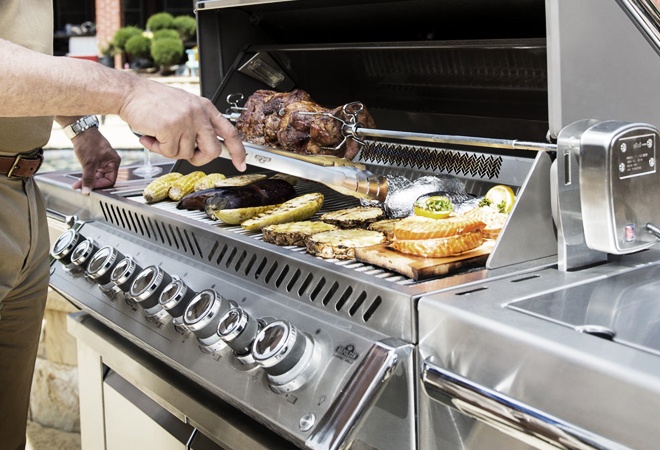
Warranty
There is, perhaps, no more telling sign of a grill’s quality than the warranty it comes with. But understanding the warranty takes a little sleuthing. Many ultra-affordable grills will boast a 10-year warranty, only for you to find out that’s only in reference to the lid or some other simple part. When you dig deeper you’ll often find things like the burner and ignitor only carry a warranty of a year or two, sometimes less.
On the other hand, it’s not unheard of to find a grill with an almost all-inclusive lifetime warranty when you spend a good bit of cash. There may be some elements that are only covered for a few years, but the bulk of the grill may be covered for life. A good rule is to look for as many parts as possible that are covered for at least 5-10 years.
Our $1,000+ Picks

Napoleon Prestige PRO 665 – $2,999
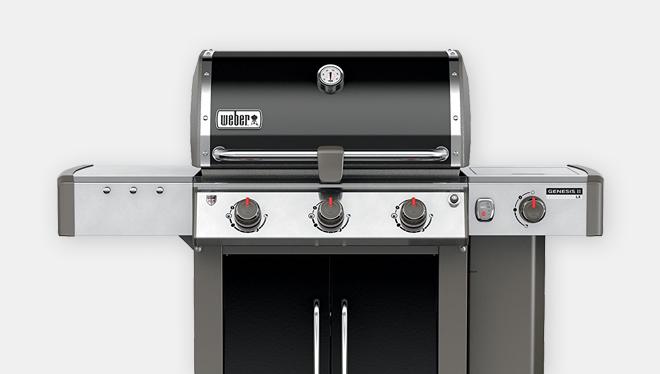
Weber Genesis II LK E-340 – $1,199
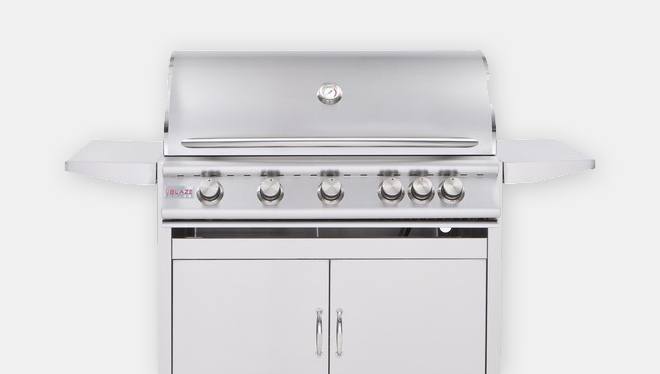
Blaze Blz-5-Lp – $2,110


